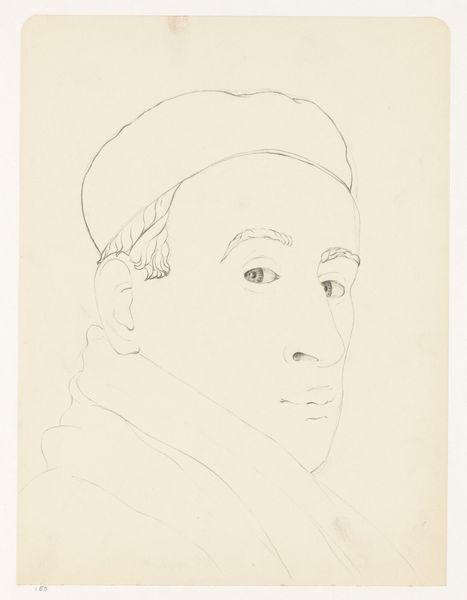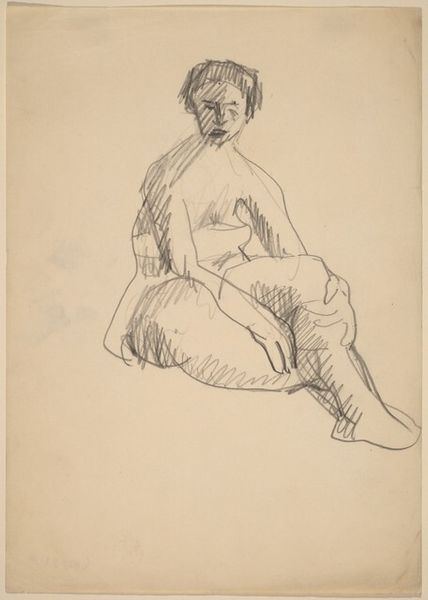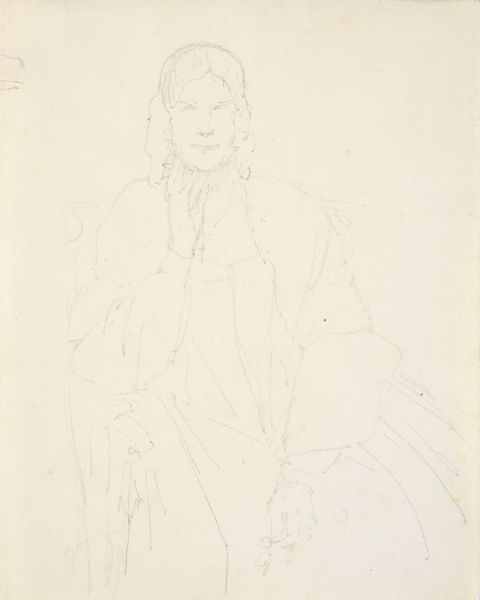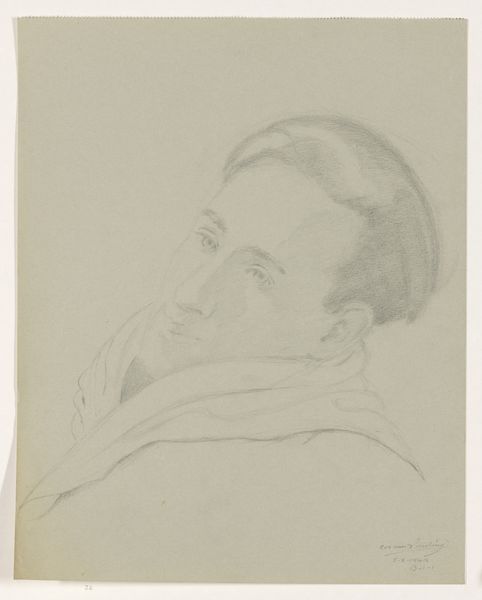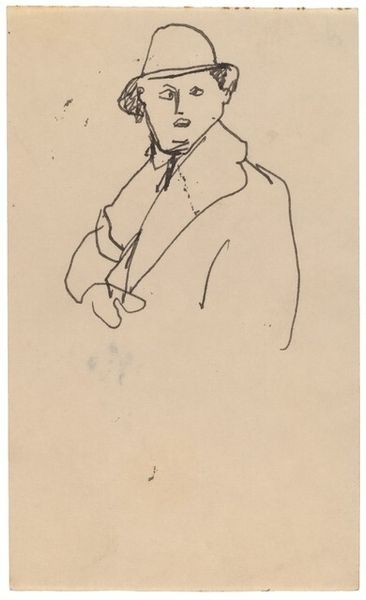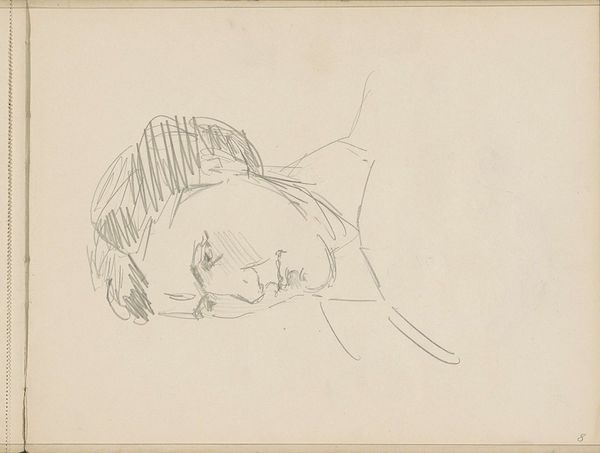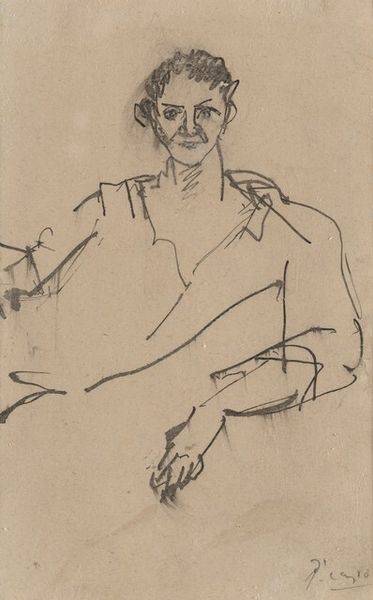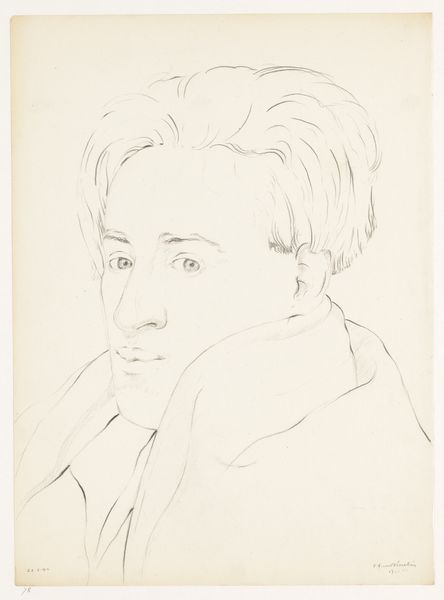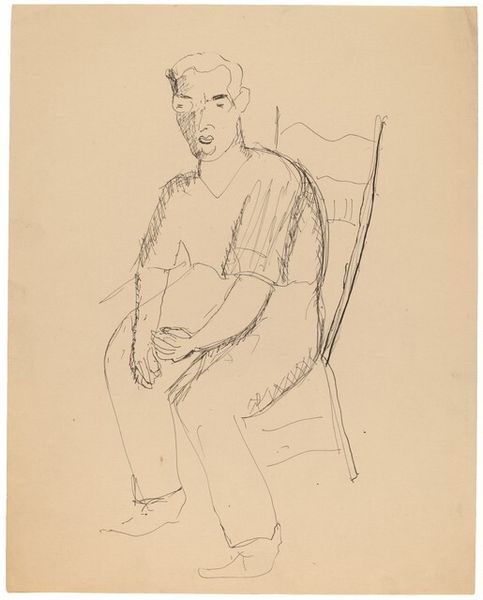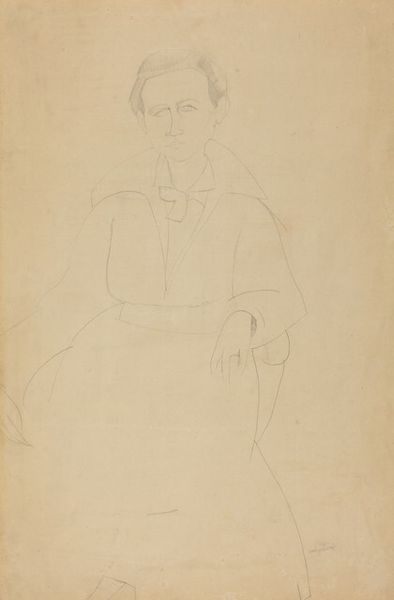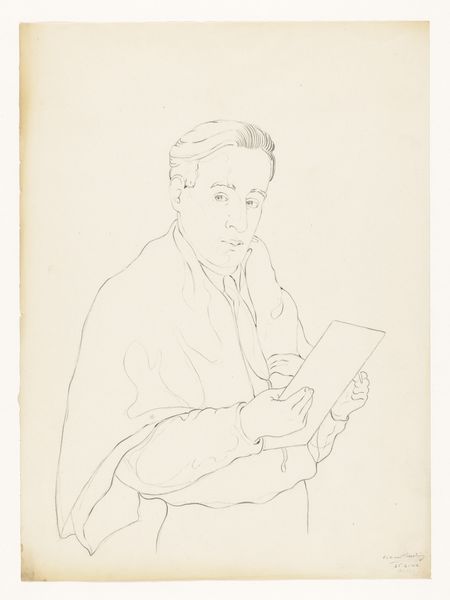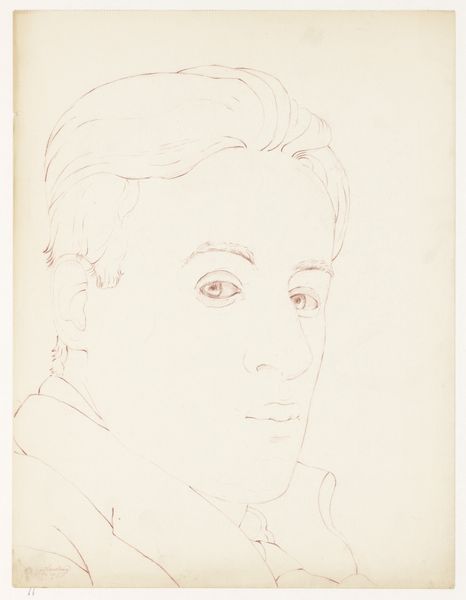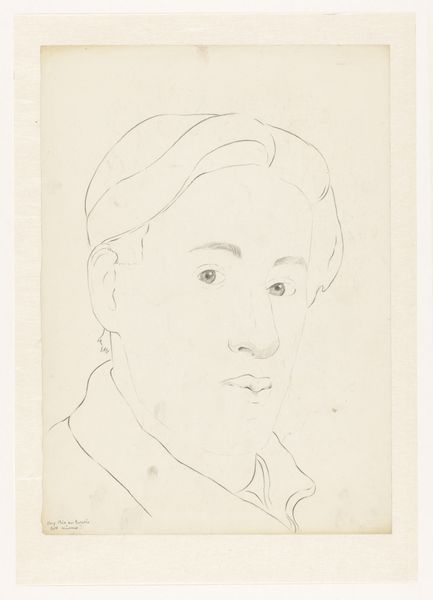
Portret van de kunstverzamelaar Louis Splitgerber 1838
0:00
0:00
drawing, pencil
#
portrait
#
drawing
#
amateur sketch
#
light pencil work
#
pencil sketch
#
personal sketchbook
#
idea generation sketch
#
ink drawing experimentation
#
romanticism
#
pen-ink sketch
#
pencil
#
sketchbook drawing
#
pencil work
#
academic-art
#
realism
#
initial sketch
Dimensions: height 380 mm, width 270 mm
Copyright: Rijks Museum: Open Domain
Editor: This is a pencil drawing entitled "Portret van de kunstverzamelaar Louis Splitgerber," created in 1838 by Henricus Wilhelmus Couwenberg. The subject appears contemplative, almost burdened. What strikes me is its unfinished quality; it feels very intimate, like a glimpse into the artist's process. What do you see in this piece? Curator: Beyond the initial impression of intimacy, I see a commentary on the evolving role of the art collector. Splitgerber, in his patronage, held a certain power. Consider how Couwenberg chooses to portray him – not in lavish surroundings, but in this almost vulnerable, unfinished state. Do you think this choice diminishes or enhances Splitgerber’s status? Editor: I suppose it complicates it. You expect a patron to be shown in their glory, but this feels more… human. It's interesting to consider how the artist is depicting not just Splitgerber, but his role in the art world. The unfinished aspect maybe indicates a power imbalance between the two. Curator: Precisely. And within that imbalance, there’s also a suggestion of collaboration, right? The work is not complete without both artist and collector. Think about the rise of Romanticism at this time, and how it intersects with early capitalist notions of ownership and artistic value. It becomes an interesting negotiation. Editor: That's a compelling point. I hadn’t considered the influence of capitalism in how artists portrayed their patrons. Curator: Exactly. And remember, portraits were powerful social tools. What identities were deemed worthy of immortalization and by whom? And this work leaves it very open-ended, for both sitter and artist, reflecting an early negotiation between artist and sitter roles, power, and money. Editor: This has really given me a different lens through which to view not just this drawing, but portraiture in general. Curator: And that is the beautiful opportunity for any art activist: bringing theory to the image, the image to broader historical patterns. I hope this view of art as culturally enmeshed as opposed to independent will remain!
Comments
No comments
Be the first to comment and join the conversation on the ultimate creative platform.
